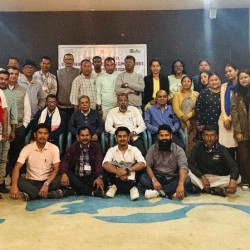Diabetes is a condition that affects millions, often leaving people tethered to medications and strict blood sugar monitoring for life. At its core, diabetes occurs when the body struggles to transport glucose into muscle cells, leading to elevated blood sugar levels. This can result in serious complications like nerve damage, vision loss, and kidney failure. While conventional treatments focus on controlling blood sugar, a growing movement argues that Type 2 diabetes—the most common form—can be reversed, not just managed. By addressing the root cause, insulin resistance, through diet and fasting, it’s possible to break free from the cycle of medication and reclaim your health.
Understanding Diabetes and Insulin Resistance
Type 2 diabetes stems from insulin resistance, where the hormone insulin fails to effectively unlock muscle cells to absorb glucose. Over time, fat deposits—particularly from refined foods, oils, and rapid sugar absorption—block insulin receptors, making it harder for glucose to enter cells. The pancreas compensates by pumping out more insulin, but eventually, it can’t keep up, and blood sugar rises. Traditional treatments, like metformin or insulin shots, aim to lower these levels, but they don’t tackle the underlying issue: the fat clogging the system. This focus on control rather than cure often traps patients in a lifelong dependency on drugs, with complications like heart disease or kidney failure looming as the real threats.
The Power of Fasting and Diet
What if you could reverse this process? An alternative approach, championed by advocates of a Plant-Based Whole Food (PBWF) diet and intermittent fasting, targets insulin resistance directly. The idea is simple: clear the fat blocking insulin receptors and restore the body’s natural sensitivity. Intermittent fasting—limiting your eating window to 8 hours a day, say from 10 a.m. to 6 p.m.—gives your body a break from constant insulin production. During the fasting period, your liver burns stored fat, including the visceral and intramuscular fat that fuels insulin resistance. Pair this with a PBWF diet—rich in vegetables, fruits, legumes, whole grains, nuts, and seeds, while avoiding refined oils, sugars, and animal products—and you create a powerful recipe for healing.
This isn’t about starving yourself or obsessing over low-glycemic foods, which can sometimes backfire by increasing fat and protein intake, straining kidneys, and raising heart disease risk. Whole foods release energy slowly thanks to their fiber content, reducing insulin spikes and preventing fat buildup in the liver and muscles. Add regular movement—aim for 10,000 steps a day—and you accelerate the process of clearing fat and boosting insulin sensitivity.
A Real-Life Transformation
Consider the story of a 74-year-old physician who turned his life around. After 30 years of managing Type 2 diabetes, high cholesterol, and hypertension with 10 medications, he weighed 209 pounds and faced a future of worsening health. Then, in June 2021, he discovered this approach at a lunch party. That evening, inspired by the documentary Forks Over Knives, he ditched sugar, oils, and dairy, embracing a PBWF diet and intermittent fasting. By August, he’d dropped to 188 pounds, his average blood sugar fell from 153 to 88, and his blood pressure normalized—all without a single pill. “I feel alive, energized, and vibrant,” he wrote, marveling at a med-free life he’d been told was impossible. His hope? That this change is sustainable—and he’s shared it with his family, all battling similar conditions.
Why Control Isn’t Enough
The medical industry often frames diabetes as a progressive, incurable disease, pushing medications and tight blood sugar targets (like fasting glucose below 120 mg/dL or HbA1c under 7.0%). Yet studies like the 2008 ACCORD trial revealed a flaw: aggressive control increased mortality, prompting updated guidelines in 2018 to aim for a more moderate HbA1c of 7.0–8.0. Fasting glucose and post-meal readings can mislead, too—natural fluctuations like the Dawn Phenomenon or temporary spikes from whole starches don’t tell the full story. A Continuous Glucose Meter offers a better view, but the real fix lies in lifestyle, not numbers.
Take Charge of Your Health
Reversing diabetes isn’t about chasing perfect metrics; it’s about healing your body. Start by cutting refined foods and animal products, adopting an 8-hour eating window, and moving daily. If you’re on meds, work with your doctor to adjust doses as your blood sugar drops—hypoglycemia is a risk if you don’t. This isn’t a quick fix but a sustainable shift. The physician’s story proves it’s possible: a cure, not just control, is within reach. Why settle for managing a disease when you can aim to leave it behind?
The Cure for Type-2 Diabetes
Diet Drug and Diabetes
Insulin is the Cause of Most Major Illnesses
Basal/Bolus Insulin and Carbohydrates
- 29950 reads









Add new comment